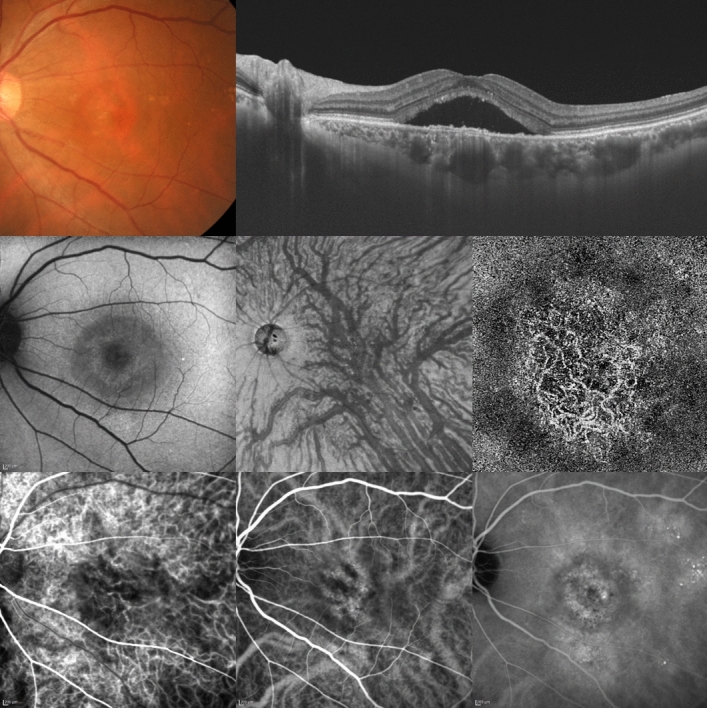Figure 2.

A 61-year-old woman was diagnosed with pachychoroid neovasculopathy. Best-corrected visual acuity in the left eye was -0.08 logarithm of the minimum angle of resolution unit. Top left: The color fundus photograph shows retinal pigment epithelium (RPE) alteration in the macular area. Top right: The horizontal optical coherence tomography (OCT) B-scan through the fovea shows dilated outer choroidal vessels (vortex veins) and shallow irregular RPE detachment accompanied by serous retinal detachment. The central choroidal thickness is 422 µm. Middle left: The fundus autofluorescence image shows no hypoautofluorescent area corresponding to RPE atrophy. Middle center: The en face OCT image (12 × 12 mm) shows dilated vortex veins and anastomoses between superior and inferior vortex veins. Middle right: The OCT angiography image (3 × 3 mm) shows network vessels of choroidal neovascularization (CNV) in the macular area. Bottom left: The early-phase indocyanine green angiography (ICGA) image shows geographic filling delay of the choriocapillaris and network vessels of CNV in the macular area. The areas of choriocapillaris filling delay fully correspond to the dilated vortex vein region in the en face OCT image. CNV is localized within the area of the choriocapillaris filling delay. Bottom center: The ICGA image shows dilated vortex veins and anastomoses between superior and inferior vortex veins. Bottom right: The late-phase ICGA image shows choroidal vascular hyperpermeability (CVH) and leakage from the CNV. The areas of CVH largely overlap with the dilated vortex vein region in the en face OCT image.
